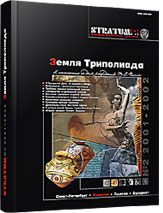«Шахматный» орнамент керамики культур развитого бронзового века Поволжья и Урала
The «chess» ornament on the pottery of the Middle Bronze Age in the Volga and Ural regions
Author(s): Oleg D. MochalovSubject(s): History, Archaeology, Ancient World
Published by: Издательский дом Stratum, Университет «Высшая антропологическая школа»
Summary/Abstract: The article is devoted to the origin and spreading of rare ceramic «chess» ornament. This decoration appears around the Volga and Ural regions in the second part of the Middle Bronze Age. The «chess» motives consist of three types described below. Key type is formed from the rhombuses, which were spread with different «chess» ornaments together. Phatyanovo-Balanovo groups were the center of mentioned ornaments. It proves that the distribution of these ornaments took place through the forest and northern part of forest-steppe regions of Europe and originally were connected with central and western European traditions. Firstly (The Stone Age) the bone is seemed to be decorated by discussing style. Steppe cultures do not have «chess» ornament. Abashevskaya (the Urals), Sintashta and Potapovo cultures demonstrate the evolution and changes of this ornament. During the first part of Late Bronze Age rhombus and «chess» ornament was concentrated in the Ural region (Aakul and Srubnaya cultures). Later we can see almost the same compositions on the samus-kizhirovskiy type of celts spread in western Siberia. The analysis of this type of ornament confirms certain connections between steppe and forest- cultures of Eastern Europe during the MBA. The transitional period from MBA to LBA demonstrates development of contacts.
Journal: Stratum plus. Археология и культурная антропология
- Issue Year: 2002
- Issue No: 2
- Page Range: 503-514
- Page Count: 12
- Language: Russian
- Content File-PDF

